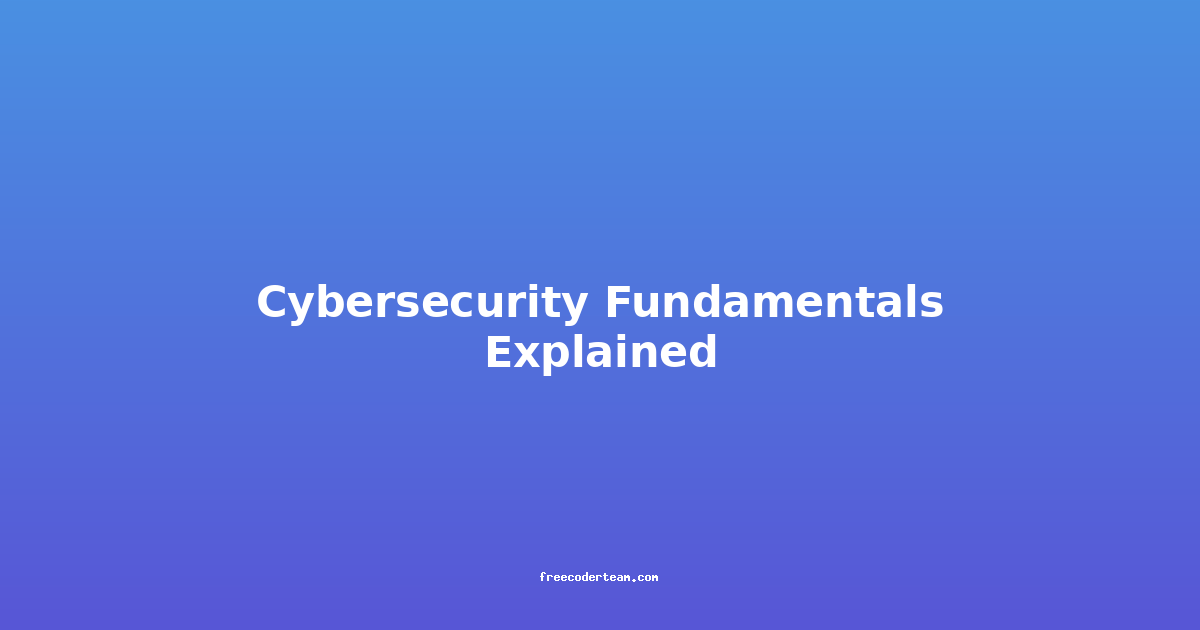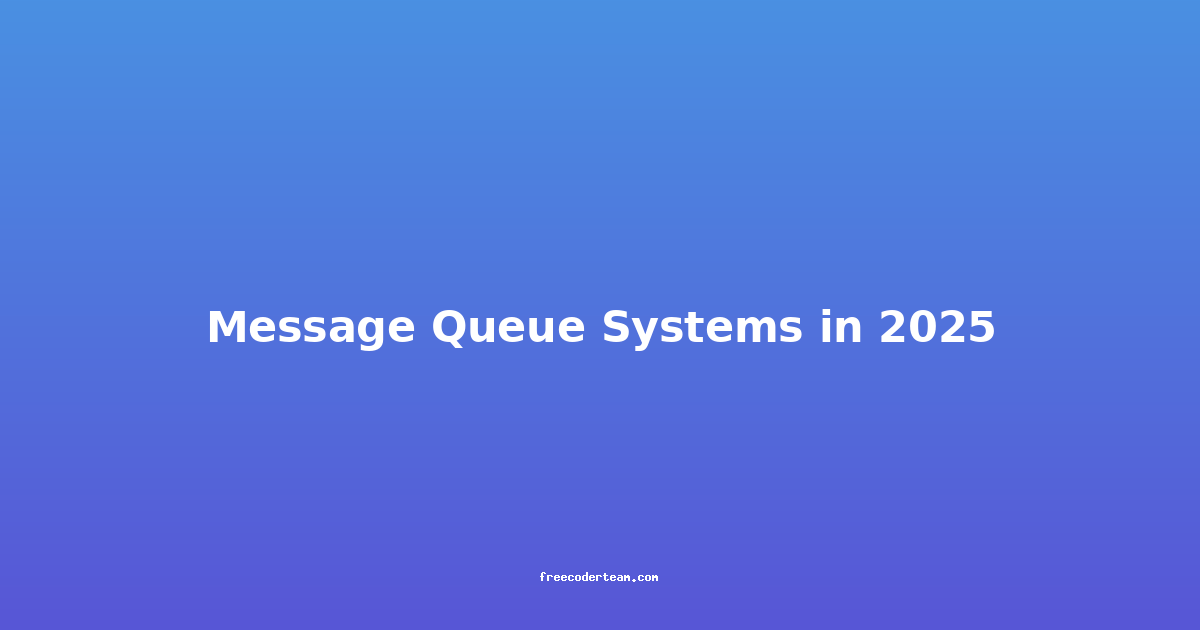Modern Approach to Cybersecurity Fundamentals: A Step-by-Step Guide
In today's interconnected world, cybersecurity is no longer an optional topic—it's a critical component of every organization's strategy. Whether you're an individual managing your personal data or a tech professional overseeing an enterprise, understanding and implementing cybersecurity fundamentals is essential. This guide will break down the modern approach to cybersecurity into actionable steps, providing practical examples and best practices to help you fortify your digital defenses.
Table of Contents
- 1. Understand the Threat Landscape
- 2. Build a Strong Foundation
- 3. Implement Multi-Layered Security
- 4. Practice Defense in Depth
- 5. Prioritize User Education
- 6. Embrace Zero Trust Architecture
- 7. Monitor and Respond
- 8. Stay Updated
- Conclusion
1. Understand the Threat Landscape
Before implementing any cybersecurity measures, it's crucial to understand the types of threats you might face. Cybercriminals are constantly evolving their tactics, making it essential to stay informed about the latest attack vectors.
Common Threats
- Phishing: Attackers send deceptive emails to trick users into divulging sensitive information.
- Ransomware: Malware that encrypts data and demands a ransom for its release.
- Social Engineering: Manipulating individuals to gain unauthorized access.
- Distributed Denial of Service (DDoS): Overloading a system to make it unavailable.
Practical Example: Phishing Attack
Imagine receiving an email from your bank asking you to verify your account details by clicking a link. This could be a phishing attempt. To protect yourself:
- Verify the email address and sender.
- Avoid clicking on suspicious links.
- Contact your bank directly through official channels.
2. Build a Strong Foundation
A robust cybersecurity strategy starts with a solid foundation. This includes securing your systems, networks, and data. Here are the key components:
a. Strong Passwords and Password Managers
Using complex passwords is a basic yet critical step. Password managers like LastPass or 1Password can help generate and store strong, unique passwords for each account.
b. Regular Software Updates
Keep your operating systems, applications, and browsers up to date. Updates often include critical security patches that protect against known vulnerabilities.
c. Data Encryption
Encrypt your data both at rest and in transit. For example, using TLS/SSL for secure web communication or AES encryption for file storage.
Code Example: Encrypting Data in Python
from cryptography.fernet import Fernet
# Generate a key
key = Fernet.generate_key()
cipher_suite = Fernet(key)
# Encrypt data
data = b"Sensitive information"
encrypted_data = cipher_suite.encrypt(data)
# Decrypt data
decrypted_data = cipher_suite.decrypt(encrypted_data)
print(decrypted_data.decode()) # Output: Sensitive information
3. Implement Multi-Layered Security
Relying on a single security measure is risky. Instead, adopt a multi-layered approach to ensure that even if one layer is compromised, others can still protect your systems.
a. Firewall Protection
Firewalls act as a barrier between your network and the internet. Configure firewalls to block unauthorized access and allow only necessary traffic.
b. Antivirus and Antimalware Solutions
Install reliable antivirus software to detect and remove malware. Regularly update these tools to ensure they can identify the latest threats.
c. Intrusion Detection Systems (IDS)
An IDS monitors network traffic for suspicious activity. For example, an IDS might flag an unusual number of login attempts from a single IP address.
4. Practice Defense in Depth
Defense in Depth is the strategy of implementing multiple layers of security controls to protect sensitive information. Even if one layer fails, others can provide a fallback.
Practical Example: Protecting a Website
- Web Application Firewall (WAF): Filters and monitors HTTP traffic to protect against attacks like SQL injection and cross-site scripting (XSS).
- Server-Level Security: Use secure protocols like HTTPS and limit access to critical files.
- Network Segmentation: Divide your network into smaller, isolated segments to contain potential breaches.
5. Prioritize User Education
Humans are often the weakest link in the cybersecurity chain. Educating users about best practices can significantly reduce the risk of successful attacks.
a. Training Programs
Conduct regular training sessions to teach employees about phishing, social engineering, and safe online behavior.
b. Simulated Attacks
Run simulated phishing exercises to test users' awareness and identify areas for improvement. Tools like KnowBe4 can help simulate realistic attacks.
c. Encourage Reporting
Encourage users to report suspicious activity immediately. A quick response can prevent a minor incident from turning into a major breach.
6. Embrace Zero Trust Architecture
The Zero Trust model assumes that no one, inside or outside the network, should be trusted by default. Verification is required before granting access to any resource.
Key Principles of Zero Trust
- Least Privilege: Grant users only the minimum access required to perform their tasks.
- Continuous Verification: Regularly authenticate and authorize users based on context.
- Microsegmentation: Divide networks into smaller segments to limit lateral movement.
Practical Example: Implementing Zero Trust
- Use Single Sign-On (SSO) with Multi-Factor Authentication (MFA) to ensure secure access.
- Implement Identity and Access Management (IAM) tools to manage user permissions dynamically.
7. Monitor and Respond
Monitoring your systems for potential threats and responding quickly to incidents is crucial. Here's how to stay on top of things:
a. Incident Response Plan
Develop a comprehensive incident response plan that outlines steps to detect, contain, eradicate, and recover from a breach.
b. Security Information and Event Management (SIEM)
Use SIEM tools like Splunk or IBM QRadar to aggregate and analyze security events, providing real-time threat intelligence.
c. Regular Audits
Conduct regular audits to assess your security posture and identify vulnerabilities before attackers exploit them.
8. Stay Updated
Cybersecurity is an ever-evolving field. Staying updated with the latest threats, technologies, and best practices is essential.
a. Follow Security News
Subscribe to reputable security blogs, podcasts, and newsletters. Organizations like NIST, SANS Institute, and CISA provide valuable resources.
b. Participate in Online Communities
Join forums and communities like Reddit's r/netsec or Stack Overflow to engage with other security professionals and learn from their experiences.
Conclusion
Cybersecurity is not a one-time effort but an ongoing process that requires vigilance, adaptability, and continuous improvement. By understanding the threat landscape, building a strong foundation, implementing multi-layered security, and prioritizing user education, you can significantly enhance your defenses.
Remember, the modern approach to cybersecurity is about being proactive rather than reactive. By staying informed, embracing new technologies, and fostering a culture of security awareness, you can protect your digital assets and stay ahead of evolving threats.
Final Tip: Start Small, Scale Up
Even if you're just beginning your cybersecurity journey, start with the basics—strong passwords, regular updates, and user education—and gradually build upon these foundations. Every small step contributes to a more secure environment.
Stay safe, stay secure! 🛡️
References:




